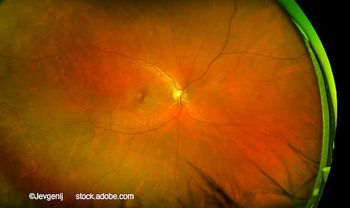
Visian ICL receives approvable letter
Midway through a conference call on July 28 with investors regarding its second-quarter financial results, STAAR Surgical's President and Chief Executive Officer David Bailey interrupted with surprising news: the FDA's Office of Device Evaluation (ODE) had issued an "approvable letter" for its myopic Visian implantable collamer lens (ICL).
"We would like to inform you that we've just-and I'd like to emphasize that we've just-received a letter from ODE that the ICL is approvable," Bailey announced.
Subject to premarket approval, the refractive phakic implant is placed in the posterior chamber to correct myopia of –3 to –15 D with astigmatism –2.5 D at the spectacle plane, and the reduction of myopia in adults with myopia ranging from –15 to –20 D with astigmatism –2.5 D at the spectacle plane. The lens also can be used to correct myopia in patients age 21 to 45 with anterior chamber depth of 3 mm or greater, and a stable refractive history within 0.5 D for 1 year prior to implantation.
The Visian ICL, already in use in 41 countries, boosted international sales, which grew 31% over the same quarter last year, according to the company. Visian ICL sales alone increased 67% compared with that quarter, and 21% compared with the first quarter of 2005. The ICL's sales accounted for 12% of total sales for the quarter, according to STAAR Surgical.
The company said it had hoped to bring the lens to the U.S. market in 2003. The ICL was the first phakic IOL to receive approval from the FDA's Ophthalmic Devices Panel, according to STAAR Surgical.
A boost for phakic IOL market
"Receipt of the approvable letter is an exciting and enormously positive development for STAAR Surgical and other companies that are developing or marketing phakic IOLs to refractive surgeons and patients," said Stephen G. Slade, MD, co-medical monitor for the FDA Myopic Visian ICL clinical trial, and director, Laser Center of Houston, Texas.
"A new option for phakic IOL implantation will increase patient awareness and interest in implantable lenses for refractive correction and expand the population eligible for refractive surgery, considering that not everyone is a candidate for cornea-based procedures," he said.
The FDA clinical trial evaluating the efficacy and safety of the myopic ICL enrolled 526 eyes of 294 patients ages 21 to 45 years old.
All had the Version 4 (V4) of the ICL implanted, which is designed to fit into the sulcus and vault over the crystalline lens, and they had myopia ranging from –3 to –20 D.
Analyses of data from 369 eyes seen at the 3-year visit show that refractive correction and visual acuity outcomes have remained stable throughout follow-up. Preoperatively, the group had a mean MRSE of –10.1 D. By the 1 week visit, mean MRSE was reduced to about –0.5 D, and >80% of eyes achieved uncorrected visual acuity (UCVA) of 20/40 or better. Between 1 week and 3 years, mean MRSE changed by <0.1 D, and at 3 years, MRSE was within 0.5 D of intended in about two-thirds of eyes and 1 D in close to 90%. In addition, UCVA was 20/20 or better in 41% of eyes at 3 years, while within the subgroup of eyes with preoperative best spectacle-corrected visual acuity (BSCVA) of 20/20 or better that were targeted for emmetropia, 59% achieved UCVA of 20/20 or better and 95% had UCVA of 20/40 or better.
Newsletter
Don’t miss out—get Ophthalmology Times updates on the latest clinical advancements and expert interviews, straight to your inbox.



















































.png)


